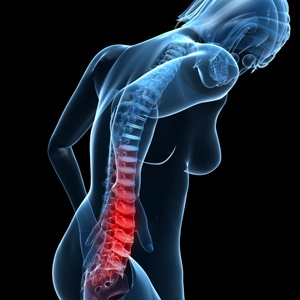
Osteoporosis is called a “silent disease” because there are usually no symptoms to indicate that your bones are becoming thinner. This makes the diagnosis of the condition difficult because the loss of bone density is usually not noticed until you break a bone.
Fractures due to osteoporosis occur most commonly at sites such as the wrist, upper arm, pelvis, hip and spine, and can result in severe pain, significant disability, and even death.
Most limb fractures (e.g. wrist or hip fractures) are obvious, whereas a spinal fracture can be difficult to diagnose. It’s often overlooked because it may be totally painless or, if there is pain, it’s usually ascribed to other causes of back pain. Only a third of vertebral fractures come to doctors’ attention.
More obvious signs of spine fractures are:
- Loss of more than 3cm height – a result of crush and endplate fractures.
- Developing a curved upper back (Dowager’s hump). This is usually due to a wedge fracture.
Hip fractures, one of the most serious and life-threatening fracture events, often result in the need for assisted care, and loss of physical independence. Fewer than half of those who survive a hip fracture regain their previous level of function, and approximately 20-25% of people who suffer a hip fracture die within a year.
Falls generally lead to fractures and, the more often you fall, the greater the chance of a fracture. How and when you fall usually determines the fracture site. Younger adults still have intact protective mechanisms, which means they usually fall with an outstretched hand, leading to forearm fractures. Older people, who have compromised protective mechanisms, often fall on their side, leading to a hip fracture.
Since there are often no outward symptoms of osteoporosis, your doctor may recommend a bone mineral density (BMD) test (also called a DXA test). This will depend on your age and whether you have risk factors for the disease.
Read more:
Treating osteoporosis
Preventing osteoporosis
Risk factors for osteoporosis
Reviewed by Teréza Hough, CEO of the National Osteoporosis Foundation of South Africa: www.osteoporosis.org.za. October 2017.




 Publications
Publications
 Partners
Partners
















